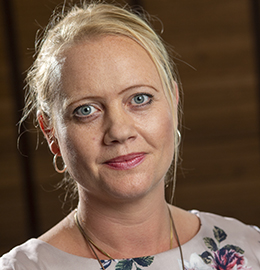
READ ALL OF THE LATEST UPDATES FROM ASCEND CONSULTANCY EXPERTS WHO DELIVER POWERFUL ANALYSIS, COMMENTARIES AND PROJECTIONS TO AIRLINES, AIRCRAFT BUILD AND MAINTENANCE COMPANIES, FINANCIAL INSTITUTIONS, INSURERS AND NON-BANKING FINANCIERS. MEET THE ASCEND CONSULTANCY TEAM.

By Sara Dhariwal, Senior Aviation Analyst, Cirium Ascend Consultancy
The spotlight is once again on the Sikorsky S-92A as concerns mount over the manufacturer’s ability to maintain the aircraft. The lack of parts supply has already prevented some of the type from returning to service. Norway’s energy minister Terje Aasland joined the debate in early 2024, suggesting to news outlet Energy Voice that “oil and gas activity may be hit by a lack of spare parts for S-92 helicopters”.
Since the fatal crash of Airbus Helicopter’s H225 off the coast of Norway in 2016, the S-92A has been the main heavy helicopter operating in the oil and gas industry. Heavies play a crucial role as they possess the range and payload to complete a return journey to oil rigs furthest offshore without having to refuel.
The current fleet of just under 200 S-92 helicopters therefore provide important support in transporting oil rig workers, and supplies, between shore and oil rig platforms. A disruption of its ability to operate could, at worst, disrupt the ability to continue to produce oil and gas.

The highlighted issue brings attention to the risks associated with relying solely on a single helicopter model, such as the S-92A, which possesses comparable payload and range capabilities.
However, until recently, there was an abundance of aircraft available to fulfil the mission requirements due to excess capacity resulting from the prolonged downturn in the oil and gas industry.
The increasing demand within the industry has resulted in a swift utilisation of the stored fleet. The storage rates for the S-92 helicopters have experienced a notable decline, reducing from an average of 15% between 2018 and 2022 to a mere 7% at present.
As a result, and in addition to overhauls required to get stored aircraft back in service, the already operational S-92A helicopters are accumulating higher flight hours, leading to an accelerated need for overhauls.
This situation creates a potential bottleneck for demand of parts and maintenance capacity.
In 2015, a new category helicopters were introduced to the market – the super mediums. The category includes Airbus Helicopters H175 and the Leonardo AW189. While they do not have quite the range/payload combination of a heavy, they have proved themselves a worthy replacement of the S-92A on most routes.

The introduction to the market for the super mediums has so far been relatively slow. With a combined current fleet of just over 80 helicopters, no spare capacity, and a typical lead time of 18-24 months for new orders, they do not provide a short-term capacity solution when the S-92 is unavailable.
The heavy/super medium categories are not the only type that have seen a sharp decline in deliveries for the offshore sector. The number of overall deliveries into the sector has reduced by over 70% in the past decade, compared to the previous 10-year period.

Limited growth is predicted in the next decade, and the 2023 Ascend Helicopter Fleet Forecast suggests that focus will be on replacement of around 25% of the current fleet. That means a replacement of around 350 aircraft in the next 10 years, which would require an average of 35 deliveries per year.
There are two new types in the market such as the Airbus Helicopters H160 and yet-to-be-certified Bell 525 Relentless. They both have the ability to take some market share from the more established types.
Even where new orders are an option, financing can be an issue. With the oil and gas downturn, dialogue about reducing reliance on fossil fuels and unfavourable contract terms from the oil majors are increasing investment uncertainty.
Lessors have increased their share of the overall fleet operating in the offshore sector over the past decade. Lessors can be beneficial in raising finance and managing fluctuating capacity requirements, but a lessor-dominant market brings its own issues.
Could the coming months provide some clues as to the future of the sector?
- Will there be an increase in order announcements, for what and from whom?
- Will the start of the replacement cycle become more evident?
- Will the lessors continue to increase market share, or will there be an increase in direct operator ownership?
- Will oil majors step up to provide more stability?
- Will there be an improvement in maintenance supply challenges?
- What about further explorations vs renewables?
This year is set to be another very interesting one for the helicopter industry and as always, the Cirium Ascend Consultancy team will be there to monitor the developments closely.
Hear more from Sara as she welcomes special guests Junia Hermont, Líder Aviação, and Samantha Willenbacher, Bristow, to our upcoming webinar on the offshore market. To join them live on Thursday 14th March, register your place.
SEE MORE ASCEND CONSULTANCY POSTS. LEARN MORE ABOUT FLEETS ANALYZER. OR FOR MORE INFORMATION, CONTACT US.
























































